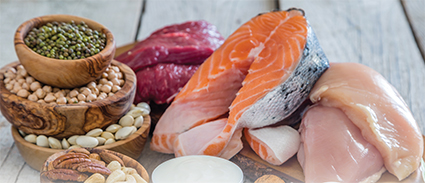Eating For Size

How to eat for ultimate mass gains with minimal fat gains
Food is truly the cornerstone of muscle growth. You can’t add size if you aren’t eating enough. But what and how should you be eating? Well, if you want to boost mass gains while keeping unwanted fat at bay, here are my suggestions to keep you growing in the right direction:
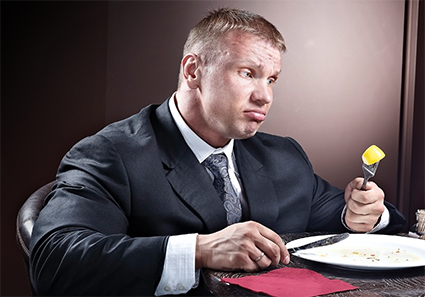
Increase Calories
This basically goes without saying, but I’m saying it anyway: You need to eat more. There are a lot of factors involved in that, but first and foremost, increase your calories over baseline. To gain mass, the average bodybuilder needs 20 calories per pound of bodyweight. For a 200-pound man, that translates to 4,000 calories per day. Now as I stated before, we’re all unique and this may be too much or too little. This is where you need to pay attention and keep track of your weight gain or lack thereof and what you see in the mirror. If you’re clearly gaining fat, then drop back to 17 calories per pound for a week and revaluate. Likewise, if you gain nothing, then you may have a very fast metabolism and need more than 4,000 calories. Make adjustments slowly. It helps to document them in a food diary.

Eat More, But Eat Right
Fast on the heels of my first point comes this hefty dose of reality. Eating more doesn’t mean eating everything in sight. It’s not the infamous “see food” diet. Although you can certainly enjoy a treat now and then in the winter months, you should not eat junk every day. The vast majority of your diet should be clean, healthy, whole food. At the very least, make sure you eat all your “clean food” before having any empty calories. If you do want a small cookie or dessert, pretend your parents are watching you and making you eat all your veggies and chicken before you’re allowed to have cake. Get in all your clean calories and there’s a good chance you will be too full to cheat on your diet. When in doubt, add in another chicken breast or another baked potato before adding in cake.

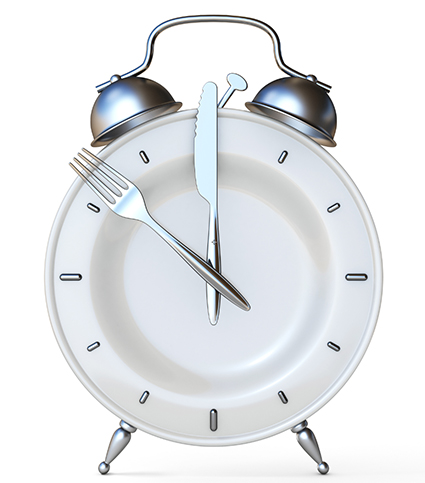 Eat Often
Eat Often
I’m going old-school gain here. I recommend you eat every two to three hours. Many new diet plans have you eating much less frequently and in much less volume. Intermittent fasting (IF) has really taken off in the past five years, and there’s some science to back it up. In fact, I’m a fan of IF; however, for the sake of mass-building, I strongly believe eating often works best. It’s less stress on your digestive system, it keeps a steady flow of amino acids in your bloodstream and it makes it far easier to get in enough calories when going for added size. It also fights cortisol. The one major drawback to IF is increased cortisol levels, which can negatively affect your muscle gains. Eating every two to three hours (even if it’s just a protein shake) goes a long way toward combating cortisol. This diet approach has worked for decades, and it will continue to work. Aim for six meals a day, plus a few snacks and a post-workout protein shake.

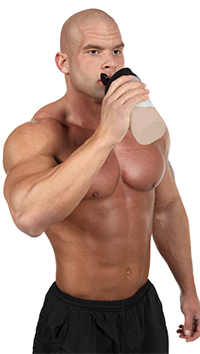 Focus on Protein First
Focus on Protein First
Eat lean protein at the start of every meal then move on to your carb choice. One to 1.5 grams of protein per pound of body weight will do wonders. There’s no need to overdose on it. Extra calories can be stored as fat—even protein calories—plus you can only absorb so much at one time. So, for most, that means one gram of protein per pound of bodyweight. Protein is required to build lean muscle mass. Carbs definitely have their place too and are often called protein sparing, but first and foremost, eat your protein before touching carbs. Carbs help “push” the protein into the muscle. Also, eating enough carbs will allow you to use the protein you take in to build muscle and it won’t be wasted as energy. Protein can be used for energy even though carbs are the body’s preferred choice. With adequate carbohydrate intake, the protein you eat will be used for the purpose you want it—mass gain! So, protein first. But don’t forget about carbs either. Yes, you can gain on a keto diet or the old-school high-protein low-carb diet, but for winter mass building, I recommend you do include carbs as well. Having said that, I do recommend carb cycling to some people who gain fat easily. I also like to change up diets often, but even when I alter my nutrition plan, I put protein first.
Don’t Worry About Eating Fat
The body needs fat. Fat is anabolic. Eating sufficient fats helps maintain higher testosterone levels. The fat from red meats can greatly speed along your progress. The same holds true for whole eggs. The cholesterol scares from the 1970s and 1980s made many people give up fat from their diets, but new studies are showing that healthy fats are critical for growth, repair, and general health. Sadly, many people still hearken back to the “all fat is bad” approach. The truth is that your body needs fats, particularly omega-3 fats. These types of fats are crucial to muscle recovery and growth. They also help to keep body fat off, they’re great for your joints, and they even affect mood and brain functions.
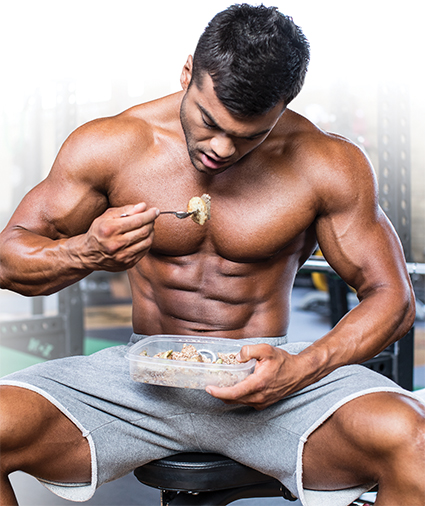
Switch Up Your Diet
Training is the stimulus that leads to muscular growth. With no stimulus, there’s no growth. But it’s only the starting point. Without the proper building blocks, you aren’t building any muscle. Try building a new house with six bricks and one two-by-four. You won’t get very far. The same is true with your body. You need fuel. You need food to fuel the growth. There are many effective diets out there. Diet is something that needs to be tailored to each individual. There’s no one-diet-fits-all approach. For every athlete that gains nothing but fat after eating a single bagel, countless bodybuilders stay lean on very high-carb diets. Many people seem to view diet almost like religion. If you’re low carb, you must always be low carb or face the wrath of Atkins! Not true.
Much like training, I feel altering your diet can have positive physical and mental aspects. However, unlike training, I don’t suggest you alter the diet weekly or monthly. Stick with a plan for a set amount of time—say, 10 to 20 weeks—then when you finish the program, evaluate the results. You may want to continue with the diet or now switch it up and try another idea and see how your body responds to it. The body adapts to diets as it does to training, and switching things up can be a huge boost both physically and mentally.
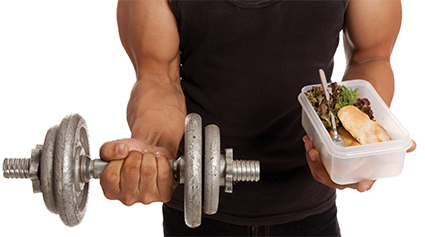
Tom Platz on the Subject of Changing Your Diet
“In the 1970s the low carb /high fat diet worked great for me. 1980–1981 I went to a high carb diet/ low fat diet, which worked really well! But I think the secret is really in “switching metabolisms.” If I had to do it all over again … when I look back, the one thing I want to say to you is I would have “switched metabolisms” more often.
“I think that would have given me a lot of effect in terms of my growth and the look of my skin, that Saran Wrap finish that I had in certain years. You have to eat in reference to your goals. Everything I eat I write down every day. I know how many grams I’m getting of fats, protein, carbs I know how my body changes … I know what I need. When I was training in California in the ’80s, I wanted to get as big as possible. For the 1980 Mr. Olympia in Sydney, Australia, I figured out my caloric intake should be 300 grams of carbs a day. My condition was on point. Everything was really perfect. That was the biggest and probably the best condition of my entire lift. It was magical solution for me. However, my body got used to high carbs and it was more difficult to achieve the same kind of condition. I should have switched metabolisms on a more regular basis.”
– Tom Platz, Bodybuilding Legend
Photos: Getty Images, Jason Ellis and Dave Laus
Click HERE to sign up for our free newsletter!


